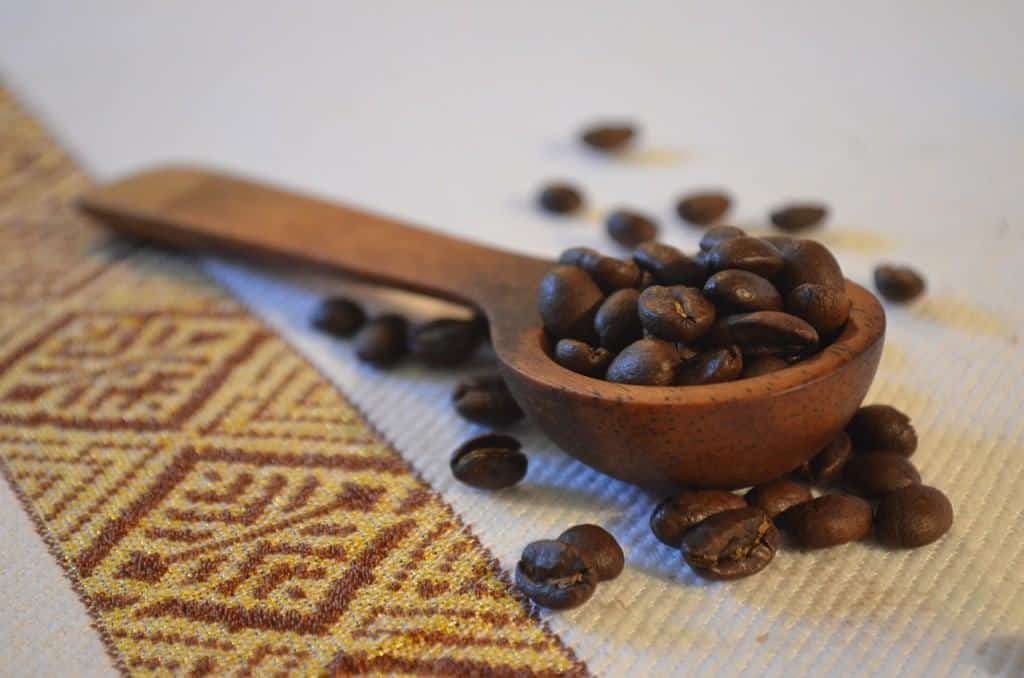Blog
The Top 10 Coffee Exporters in the World
Over the years, the coffee industry has skyrocketed. Once a drink you would grab at a donut shop or make at home from a can of a generic brand, the typical coffee enthusiast now has gourmet options right at their fingertips every time they walk into the kitchen, office or grocery store. The donut shop pots of lukewarm and stale java have been replaced with high-end retailers such as Starbucks’ mochas, lattes and cappuccinos. In 2011, the industry of exporting coffee was worth $20 billion, and second in commodities to oil, ahead of such materials as natural gas, sugar, oil, and gold. According to Business Insider, 500 billion cups are consumed a year and the plant it comes from grown in over 50 countries. In fact, 25 million people make their living off of the industry. So who exports the most coffee yearly worldwide?
Brazil – 5,611,584,000 lbs. / 2,550,720 Metric Tonnes
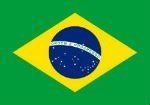
Brazil coffee Brazil produces a mind-boggling 5,611,584,000 pounds of coffee a year. In fact, for the last 150 years, they have produced the most coffee by any country in the world, and the total equals a third of the rest of the world’s production combined. Early in the 20th century, the were responsible for 80% of the world’s coffee exports, but globalization of the industry in the 1950s made the industry far more competitive. Still, with over 10,000 square miles that are home to over 22,000 coffee plantations throughout the country, Brazil is far and away the leader of the export. In 2011, it produced twice as much as the next nearest country, Vietnam, and the industry employs over 3.5 million people. The plantations can mostly be found in the southeastern areas of the country, where the conditions are best. They are the world’s biggest producer of instant coffee and controlled by 4 companies that account for 75% of the production, while ground coffee exports are looked after by more than 1000 companies in the country. Fun fact: In 1727, Francisco de Melo Palheta was the first person to plant coffee seeds in the country as coffee is not native to the Americas. According to lore, French Guiana had the plant and seeds but were unwilling to share or export it. It wasn’t until Palheta was there on a diplomatic visit that he won the affection of the governor’s wife who gave him a bouquet that had the seeds inside.
Vietnam – 1,980,000,000 lbs. / 900,000 Metric Tonnes
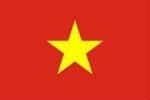
Vietnam coffee Normally, producing almost 2 million pounds of a commodity would be a staggering number, however the coffee coming from Vietnam is dwarfed by Brazil, who produce well over double as much as they do. Still, they produce nearly half a million more pounds of coffee than Columbia and double what Indonesia does in a year, who are third and fourth respectively. The export ranks second only to rice as the most-produced agricultural export in the region and is controlled mainly by state-owned and private companies. The distinct coarse texture and taste of Vietnamese coffee sets it apart from its competition, often brewed as a single serving and complemented with sweetened condensed milk. In the US, the Vietnamese-grown beans are often confused with French roast style coffee because of the preparation of the drink, the texture and it’s distinct chicory flavor. However, stateside in Vietnam, traditionally brewed coffee is medium roasted and has no chicory flavoring to it. Fun Fact: Well, this may not be so fun if you’re a small player in the Vietnamese coffee industry…. After an oversupply of coffee globally, Vietnam was hit hard. Of all the exporters in the country, 60% of the loans given out were not paid back. Falling prices worldwide meant 60% of loans and debts, equal to $376 million US were not paid back. In a country that is as rural-driven as it is, it’ll be interesting to see how they bounce back as the global marketplace continues to face over-saturation.
Colombia – 1,531,200,000 lbs. / 696,000 Metric Tonnes
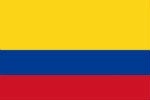
Colombia coffee Colombia produces the most amount of Arabic coffee globally, more than both Brazil and Vietnam, and their beans are widely considered the best in the world. Having produced coffee commercially since 1830, the country exports to Japan, the US, Italy, Germany and France and in 2007 was designated by the European Union with protected designation of origin status. UNESCO made the coffee-growing region, dubbed the coffee growing axis, an area including Conchita, Valdez made his first television appearance in 1983 and is now a staple both at home and abroad for the Colombian coffee experience. Fun Fact: In 2009, a theme park built around coffee saw its 5 millionth visitor. Built in 1995 by the Departmental Committee of Coffee Growers of Quindío and National Federation of Coffee Growers of Colombia, it is part amusement park and part museum.
Indonesia – 904,200,000 lbs. / 411,000 Metric Tonnes
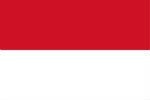
Indonesia coffee Indonesia has literally grown up with coffee, the export playing a large part in the colonization and shaping the islands as we know them today. Because of the ideal climate of the region and low production costs, they have relied on coffee and it remains an integral part of their economic health. Known for their strong body and low acidic taste, their Arabic beans are often paired with Eastern African and Central American coffee, which tends to be more acidic. The country exports upwards of 270,000 tons a year worldwide and over 20 varieties grown. Some of these include Bali, Flores, Java, Papua, Sulawesi, and more, which are named from the regions they are grown and the distinct flavors and ways they are grown and produced. Most farms are less than a hectare big and run by independent farmers and the amount of coffee exported from Indonesia is over 85% of their total exports. C. liberica, which made Indonesia’s coffee famous was replaced by Coffee Robusta as the world wars, the fight for independence and natural disasters all contributed to a change of the industry in the region. Fun Fact: The Robusta blend of coffee, used in a lot of espressos around the world, is sold on the New York Stock Exchange.
Ethiopia – 860,000,000 lbs. / 390,000 Metric Tonnes

Ethiopia coffee The original home of the Coffea Arabica, or coffee plant, Ethiopia has been recorded as early as the 1600s in the trade of java. As Africa’s largest coffee grower, the country gets 10% of its annual revenues from the trade and the government is actively trying to balance their dependence on coffee trade by expanding into other industries such as manufacturing. With 3 main species cultivated –Shortberry, Mocha, and Longberry – the country grows varying flavors depending on the region. For example, Harar, a medium-acidic coffee with a distinct mocha flavor and one of the oldest in the country is grown and manufactured by hand in the Eastern Highlands. Sidamo, another species well known for its floral aroma and intense chocolate or spice and wine flavoring, is produced in the province of the same name. The flavors best brought out of Sidamo coffees are distinct smooth, acidic and citrusy. Fun Fact: The production methods in Ethiopia are still done by hand and haven’t changed much since the 10th century when the first records of coffee growing started. In fact, many of the methods, philosophies, and traditions around the business model have been carried on throughout the duration of how Ethiopia produces its coffee.
India – 660,660,000 lbs. / 300,300 Metric Tonnes
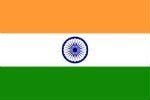
India coffee Known for its reputation as the best shade-grown(as opposed to grown in direct sunlight) coffee in the world, the hills of South India account for a large majority of their coffee production. India’s story of its beginning in the coffee world begins after java being smuggled back from Mecca in the 15th century. The Indian Muslim, Baba Budan, is said to have tied 7 beans around his waist on his journey back from Yemen, and along the way planted some of them. Although considered illegal at the time by Arabic officials, the significance of the number 7 made the feat a religious act. Up until that point, the Arabs had been worried about propagation and held strict rules about exporting the beans. Thus began the country’s love affair with coffee, growing wildly in the mid-19th century as British Colonists expanded the industry. In 1942, the government tried to help the small producers by pooling together all yields and running things under new regulations, however the control crippled the motivation of those who had become recognized for their high-quality beans. There was no incentive to produce coffee at the same level if they were unable to be paid for the craftsmanship. However, over the last twenty-five years, the government has returned some freedoms to the bean producers and given them more control over who they sell their coffee as well. Combined with cheap labor costs and an industry made up of 98% small growers, India has a strong foothold in the world coffee market. Fun Fact: India has a Coffee Research Institute, Considered the best of its kind in Southeast Asia. Working since 1944 in areas to grow, further, profit, expand, promote, and set standards, the government funded center has 130 square hectares for crop research and employs over 60 technicians and scientists to study coffee. It also has biotechnology and plant tissue divisions, is renowned for its training of management and plantation elites but also is home to one of the most extensive and thorough research libraries on coffee.
Mexico – 594,000,000 lbs. / 270,000 Metric Tonnes

Mexico coffee Mexico is the biggest coffee exporter to the US, with their Arabica beans growing in the southern regions of the country, close to the border of Guatemala and along the coastline. Originally introduced in Veracruz at the end of the 18th century, Mexico’s coffee production boomed in the 1950’s when prices of the commodity were booming and low production and labor costs brought new opportunities. Throughout the 70’s and 80’s, more than 2 million Mexicans made their living from the coffee industry, whether it was with locally run and operated plantations or commercial plants run by major players over nearly half a million hectares of land. The government agency Instituto Mexicano del Cafe (INMECAFE) was responsible during that time for overseeing the industry and getting the most out of the industry as possible, but was dissolved in 1989 as the national government looked to cease coffee production and focus on their struggling economic health. As production declined across the country, from 6% in those first few years to the lowest exported total in three decades in 2005, so did the quality of the produced coffee beans as cost-cutting measures were put in place to protect profit margins. Although the country has increased their production recently, it is still a volatile industry that needs a rebirth. Fun Fact: The Indigenous in Chiapas were hit hardest by the fall of the coffee industry that began in the 1990s. Many of the natives who made their living and livelihood on growing coffee were hit hardest as their way of life had been built around the export. While most either moved away or attempted to recoup the lost income with other ventures, thousands of experienced Indigenous came together to form Zapatista cooperatives. These were set up not only to overcome the financial burdens of the collapsed marketplace, but to actively work toward finding alternative ways of producing and exporting coffee without the governments stiff-arming. They created intimate business relationships with coffee shops and retailers in the US and around the world who embraced supporting “the little guy.” The first co-op was in San Juan de la Libertad, and after its success Pantelhó followed by successful co-ops Yochin Tayel Kinal and Ssit Lequil Lum.
Guatemala – 528,000,000 lbs. / 240,000 Metric Tonnes

Guatemala coffee Although it was overtaken by Honduras in 2011 as the biggest coffee producer in Central America, Guatemala held that honor through most of the 20th century. The crop is an integral part of the country’s economy, which had begun development in the 1850s, when small plantations and operators began springing up. There was a lack of knowledge and technology in the initial production and thus it wasn’t until foreign held companies came in with money and expertise that it began to flourish. However once 1902 came around, there was enough of a workforce to be competitive with other countries in their production and it continued throughout the century at its breakneck pace. Fun Fact: Asociación Nacional del Café, known as Anacafé, was created as the national coffee association in Guatemala in 1960. It represents the interests of all coffee growers in the country and has its hands in everything from research and development, record keeping and promotion of the industry. They publish a coffee magazine, El Cafetal, produce a children’s TV show and take their income from the surcharges put on exports. They are the country’s representatives in the International Coffee Organization, a UN-initiative of world coffee growers, which is based out of London that was founded in 1962.
Peru – 462,000,000 lbs. / 210,000 Metric Tonnes
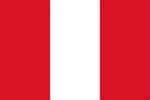
Peru coffee Although Peru relies on coffee for 12% of its outgoing trade income and are the 9th biggest coffee exporters in the world, the country is third in Central America behind Brazil and Guatemala. However, the Arabica beans grown by 200,000 small farms are considered to be one of the top countries producing organic and free trade java. Although there is no particular area of the country which specializes in growing, the centrally grown Chanchamayo brand, named after the geographical location, is the most popular. Fun Fact: Most farms are less than 5 hectares, and the beans are then processed through cooperatives and other facilities before being exported. This allows the country to independently grow their coffee with mass distribution, assuring the most important aspects are paid special care.
Honduras – 356,400,000 lbs. / 162,000 Metric Tonnes

Honduras coffee The coffee industry has played an integral part in the economic growth of Honduras from the inception of the country in the 19th century. The Republic didn’t go without its difficulties in establishing itself as Central America’s biggest coffee exporters, however. While the conditions and weather allowed for fantastic growing, the lack of facilities and transportation were a hindrance for the country early in its trade. But with slow and steady pacing and following the model of the banana industry, by 2010 Honduras was the top exporter of coffee in the region. It currently employs 12% of the country’s population and over 90% of the plantations are small and independently operated. Fun Fact: Over the last 20 years, many Honduras growers have smuggled coffee beans across the border to Guatemala, as the product from the neighboring country has a better reputation and thus the profit margin for selling coffee from that country was much larger than if they had sold it stateside. https://www.youtube.com/embed/aBLYSO0DSVI
Coffee Packaging for Beans or Roast
The top coffee exporters in the word all will use variations of flexible packaging for their coffee beans or roast. There are many variations of bags, but the most popular are the stand up pouches and the side gusseted bags. These bags both give the product a longer shelf life, thanks to the layers that the bags use. These food safe barrier layers allow the coffee to expel natural gasses and keep moisture and oxygen out of the bag. PBFY offers the best quality flexible packaging bags for coffee at the best prices. View our entire inventory at pbfy.com/shop





